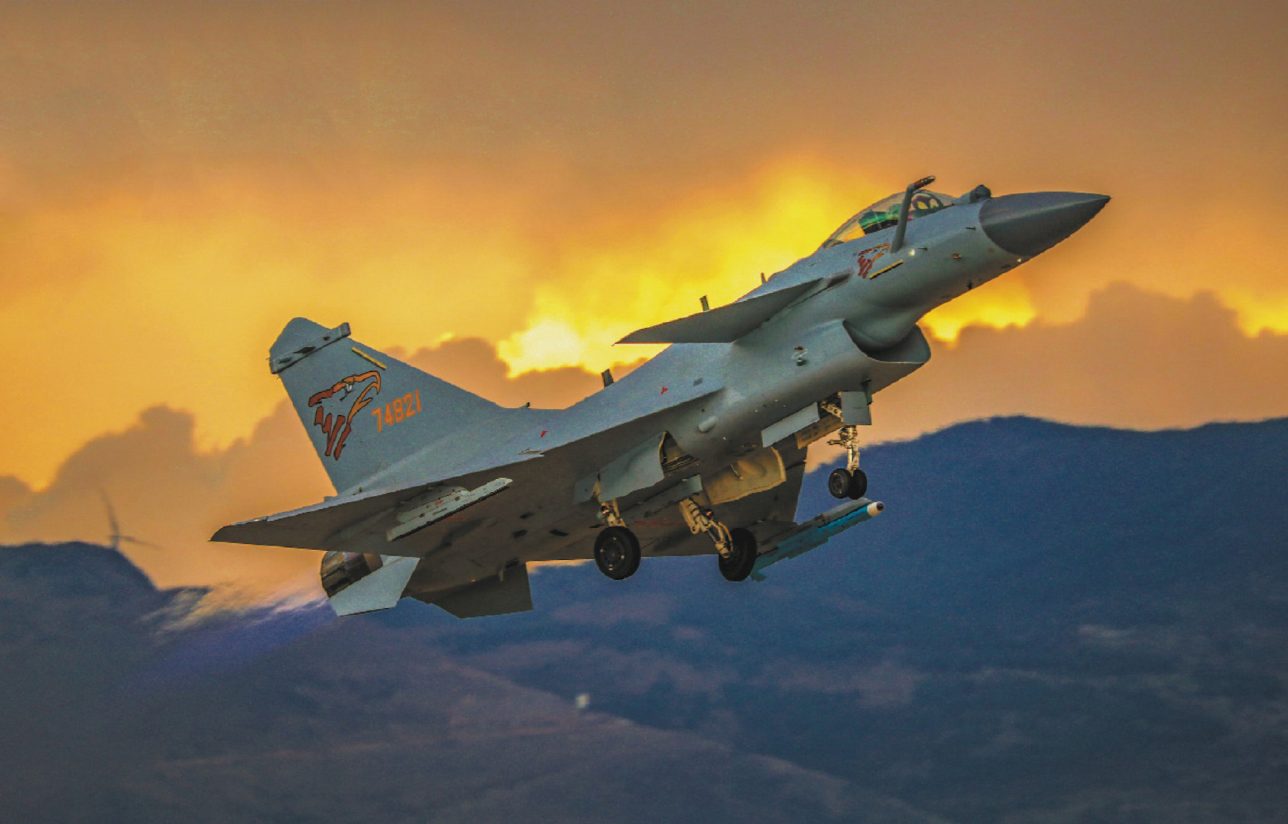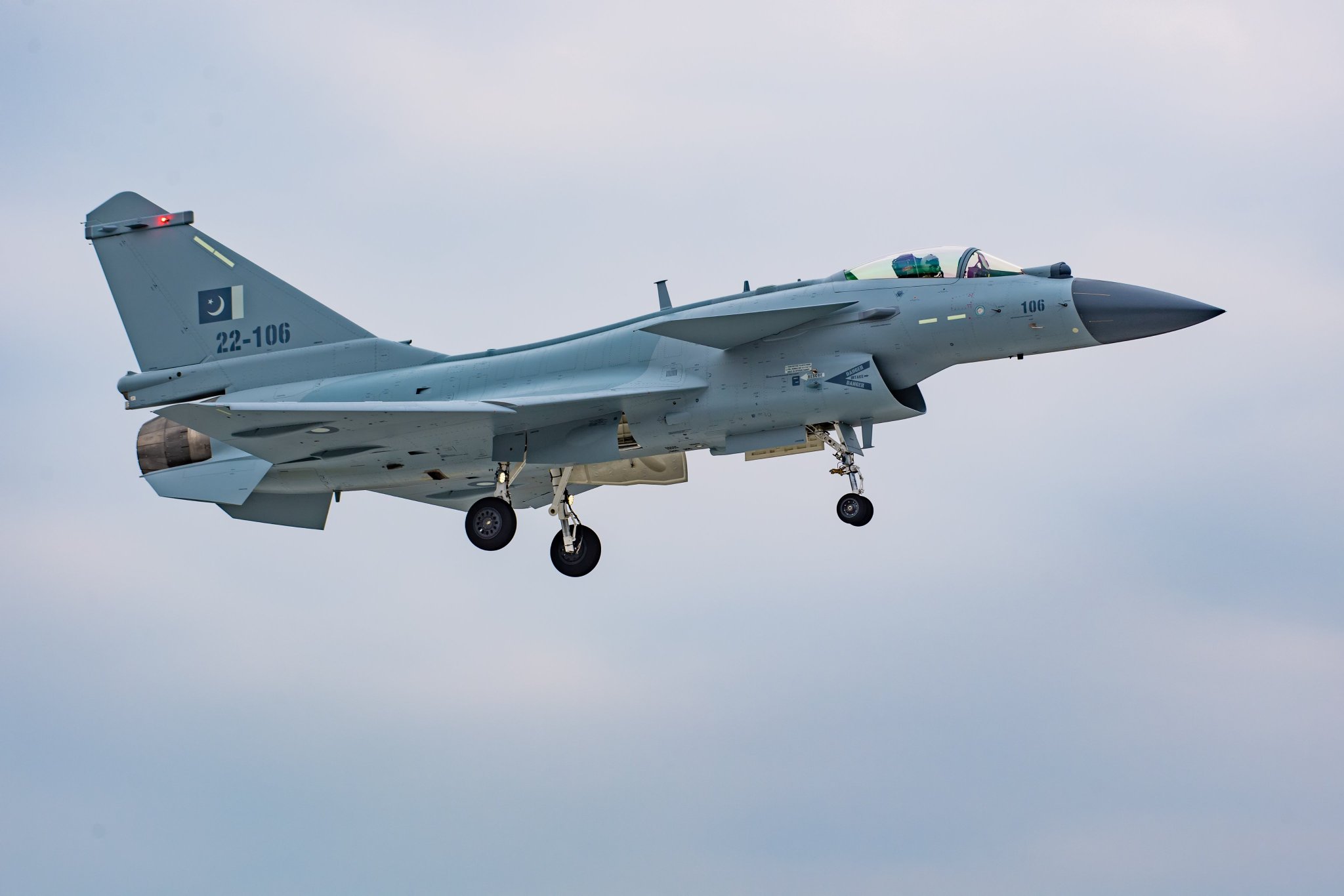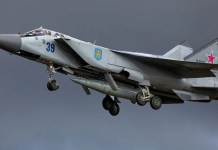Pakistan has received the second batch of J-10C fighters from its all-weather ally China, the country’s local media reported.
US Military Gets ‘Most Powerful Laser Weapon Till Date’; Lockheed Delivers 300 KW DEW Under HELSI Program
Short On Weapons, Russia Leaves Its 2nd Biggest City ‘Unguarded’; Moves Air Defense Missiles To Ukraine – Finnish Media
The J-10C, also known as the J-10CE, is currently the PAF’s most sophisticated platform and is seen as a rival to India’s Dassault Rafale. The Pakistani Air Force refers to the Chinese-built aircraft as “Dragon from the East” and hails them as essential tools for maintaining the ‘security balance’ in the region.
The Pakistani news channel 92 News recently reported that six more J-10C aircraft have arrived in the country, implying that the second batch has been delivered by China. Pakistan’s fleet of J-10C aircraft now stands at 12 following the delivery of the second batch.
Pakistani local media (92 news) has confirmed the delivery of additional (2nd Batch) 6x J-10C to Pakistan Air Force, which takes total delivered J-10C to 12.
Earlier serial no. 22-101 to 22-106 (6x J-10C) were delivered, now if report is correct it will be 22-107 to 22-112 ? ?? pic.twitter.com/q3yuZ8rBRS
— Pakistan Strategic Forum (@ForumStrategic) September 18, 2022
In March 2022, the Pakistan Air Force (PAF) formally commissioned the first batch of six cutting-edge J-10C fighter aircraft. The serial numbers of thosesix6 jets range from 22-101 to 22-106.
If the latest reports are correct, the serial numbers of the new fighter jets will be 22-107 through 22-112. Islamabad signed a deal with Beijing to purchase fighter planes in June 2021.
Pakistan’s Interior Minister Sheikh Rashid Ahmed revealed in December 2021 that Pakistan had ordered an entire squadron of 25 Chinese multirole J-10C fighter jets in reaction to India’s purchase of Rafale fighter planes.
Andreas Rupprecht, a Germany-based Chinese military aviation expert, also posted a picture of the J-10C with the serial number 22-111 that is allegedly now in Pakistan.
I’ve heard that too and at the PDF someone posted this, allegedly already in Pakistan pic.twitter.com/QbcofHZSmI
— @Rupprecht_A (@RupprechtDeino) September 18, 2022
The latest reports come days after a picture of Pakistan’s Chinese-origin J-10C fighter jets, painted in a pattern resembling the French-made Mirage V jets’ camouflage/paint scheme, went viral on social media.
Meanwhile, there were reports that Sudan was considering the J-10C aircraft from China, hinting that it could become the aircraft’s second international customer after Pakistan.

J-10C’ Vigorous Dragon’
The NATO-designated “Firebird” J-10 is a single-engine light multirole fighter that can operate in all weather conditions. It was designed to conduct air-to-air combat and strike missions for the People’s Liberation Army Air Force.
The J-10C entered service in 2018 and has since been considered one of the most powerful single-engine fighter aircraft. Compared to other jets, the J-10 is being developed on a wider scale, with China reportedly already fielding over 200 and Pakistan starting to establish its first unit.
For enhanced maneuverability, the J-10 has a wide delta wing and two canards behind the cockpit. The J-10C variant is believed to be powered by the locally produced WS-10 Taihang engine, as previously reported by the EurAsian Times.
The weaponry is comparable to MiG-29 and F-16, with three weapon pylons on each of the wings and three on the belly. The J-10CE is the Pakistan Air Force’s first modern aircraft since the Chinese JF-17, which was developed in partnership with Pakistan.
The Pakistani Air Force hailed the induction of this fighter jet as a proud and historic event for the entire country. This aircraft, according to the Pakistani Air Force, conveys a loud and clear statement about how operationally ready the Pakistan Air Force is.
Some of the fighter’s most notable features are the presence of the powerful AESA radar, reduced radar cross-section, and availability of the highly long-ranged AESA-guided PL-15 air-to-air missile.

The canopy’s single-piece design also eliminates the support framework, which frequently contributes to radar reflection. Even the primary delta wing appears straight, as opposed to the bent surface of the older J-10, J-10B, and J-10C types.
It boosts maximum speed while decreasing drag and improving aerodynamic control.
Furthermore, Pakistani aircraft appear to be equipped with infrared search-and-track (IRST) equipment on the nose. IRST can detect the heat signature of aircraft or missiles. IRST, unlike radar, does not expose the location of the host plane, boosting its survivability.
The J-10CE is the Pakistan Air Force’s first IRST-equipped aircraft. This offers Pakistan access to technology that India has enjoyed for decades, owing to its MiG-29, Su-30, and now Rafale jets.
- Contact the author at ashishmichel@gmail.com
- Follow EurAsian Times on Google News





